
Universal City Studios LLC, doing business as Universal Pictures is an American film production and distribution company, a division of Universal Studios, which is owned by NBCUniversal, a division of Comcast.

Samson and Delilah is a 1949 American romantic biblical drama film produced and directed by Cecil B. DeMille and released by Paramount Pictures. It depicts the biblical story of Samson, a strongman whose secret lies in his uncut hair, and his love for Delilah, the woman who seduces him, discovers his secret, and then betrays him to the Philistines. It stars Victor Mature and Hedy Lamarr in the title roles, George Sanders as the Saran, Angela Lansbury as Semadar, and Henry Wilcoxon as Prince Ahtur.

Julius Dassin was an American film and theatre director, producer, writer and actor. A subject of the Hollywood blacklist, he subsequently moved to France, and later Greece, where he continued his career. He was a member of the Academy of Motion Picture Arts and Sciences and the Screen Directors' Guild.

Donald Shepard Hewitt was an American television news producer and executive, best known for creating the CBS television news magazine 60 Minutes in 1968, which at the time of his death was the longest-running prime-time broadcast on American television. Under Hewitt's leadership, 60 Minutes was the only news program ever rated as the nation's top-ranked television program, an achievement it accomplished five times. Hewitt produced the first televised presidential debate in 1960.
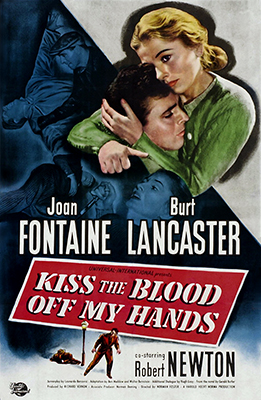
Kiss the Blood Off My Hands is a 1948 American noir-thriller film directed by Norman Foster. Based on the best-selling novel of the same name by Gerald Butler, it stars Joan Fontaine, Burt Lancaster, and Robert Newton. The film faced minor opposition from fundamentalist groups in the United States and the Commonwealth, with regard to its gory title. In some markets, the film was released under the alternate titles The Unafraid or Blood on My Hands.
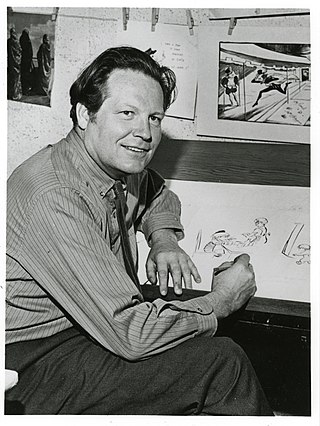
Don Freeman was an American painter, printmaker, cartoonist, and an illustrator and writer of children's books. He was active from the 1930s to the 1970s and often used Times Square as the backdrop of his memorable works.
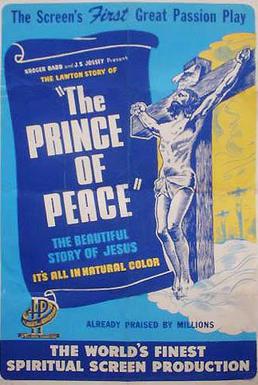
The Lawton Story of "The Prince of Peace", originally released as The Lawton Story and later reissued as The Prince of Peace, is a religious-themed film that later made the roadshow rounds presented by exploitation pioneer Kroger Babb. Filmed in Cinecolor in 1948, it is based on an annual passion play in Lawton, Oklahoma, "The Prince of Peace," created in 1926 by Rev. A. Mark Wallock. This Easter pageant became immensely popular among locals, attracting as many as 250,000 people.
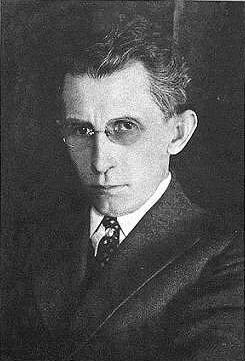
James Searle Dawley was an American film director, producer, screenwriter, stage actor, and playwright. Between 1907 and the mid-1920s, while working for Edison, Rex Motion Picture Company, Famous Players, Fox, and other studios, he directed more than 300 short films and 56 features, which include many of the early releases of stars such as Douglas Fairbanks, Mary Pickford, Pearl White, Marguerite Clark, Harold Lloyd, and John Barrymore. He also wrote scenarios for many of his productions, including one for his 1910 horror film Frankenstein, the earliest known screen adaptation of Mary Shelley's 1818 novel. While film direction and screenwriting comprised the bulk of Dawley's career, he also had earlier working experience in theater, performing on stage for more than a decade and managing every aspect of stagecraft. Dawley wrote at least 18 plays as well for repertory companies and for several Broadway productions.
Peter Vincent Douglas is an American television and film producer. He is the third son of actor Kirk Douglas, and the first by his second wife, German-American producer Anne Buydens. Douglas worked closely with his father and became president of The Bryna Company, an independent film and television production company formed by Kirk Douglas in 1949. In 1978, he formed his own film production company, Vincent Pictures.

M.C. Levee was born Michael C. Levee.
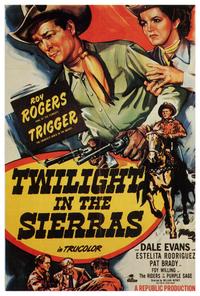
Twilight in the Sierras is a 1950 American Trucolor Western film directed by William Witney and starring Roy Rogers and his horse Trigger, along with Dale Evans, Estelita Rodriguez, and Pat Brady.

Sunset in the West is a 1950 American Trucolor Western film produced by Republic Pictures, directed by William Witney, and starring the "King of the Cowboys" Roy Rogers and his palomino Trigger, promoted as "The Smartest Horse in the Movies". Estelita Rodriguez, Penny Edwards, and veteran character actor Will Wright are among the production’s supporting players.
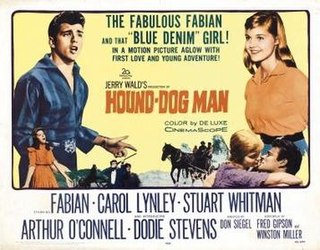
Hound-Dog Man is a 1959 American musical comedy drama film directed by Don Siegel, based on the 1947 novel by Fred Gipson, and starring Fabian, Carol Lynley, and Stuart Whitman.
In the Name of the Law is a 1922 American silent melodrama directed by Emory Johnson. FBO released the film in August 1922. The film's "All-Star" cast included Ralph Lewis, Johnnie Walker, and Claire McDowell. The cast also included Johnson and his wife, Ella Hall. Emilie Johnson, Johnson's mother, wrote both the story and screenplay. In The Name of the Law was the first picture in Johnson's eight-picture contract with FBO.

Something Different is a lost 1920 American silent drama film produced and distributed by Realart Pictures, an affiliate of Famous Players–Lasky and Paramount Pictures. It is based on a novel, Calderon's Prisoner, by Alice Duer Miller. The picture was directed by Roy William Neill with some filming being done in Cuba. Some of the cast's passport photos to enter Cuba for this production are found at Flickr.

Bryna Productions is an American independent film and television production company established by actor Kirk Douglas in 1949. The company also produced a handful of films through its subsidiaries, Michael Productions, Joel Productions and Douglas and Lewis Productions, and outside the United States through Brynaprod. Other subsidiaries included Eric Productions, which produced stage plays, Peter Vincent Music, a music publishing company, Bryna International, a photographic service company, and Public Relations Consultants, which supervised the publicity of its early films. Douglas named the main company after his mother, Bryna Demsky, while its primary subsidiaries were named after his sons: Michael Douglas, Joel Douglas, Peter Douglas and Eric Douglas. In 1970, Bryna Productions was renamed The Bryna Company, when Douglas welcomed his children and second wife into the firm. Nevertheless, Michael, Joel and Peter, wanting to establish individual identities, went on to form their own independent film production companies.
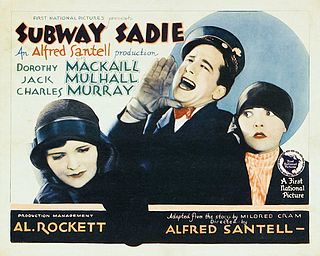
Subway Sadie is a 1926 American silent comedy-drama film directed by Alfred Santell. Adapted from Mildred Cram's 1925 short story "Sadie of the Desert", the film focuses on a relationship between New York salesgirl Sadie Hermann and subway guard Herb McCarthy, who meet on the subway and become engaged. However, after Sadie receives a promotion, she must choose between her new job and marrying Herb. The cast also includes Charles Murray, Peggy Shaw, Gaston Glass, and Bernard Randall.
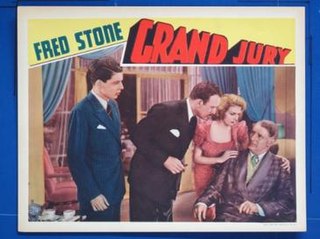
Grand Jury is a 1936 American crime drama film directed by Albert S. Rogell from a screenplay by Joseph A. Fields and Philip G. Epstein, based on a story by James Edward Grant and Thomas Lennon. Produced and distributed by RKO Radio Pictures, it premiered in New York City on July 31, 1936, and was released nationwide the following week on August 7. The film stars Fred Stone, Louise Latimer and Owen Davis, Jr.
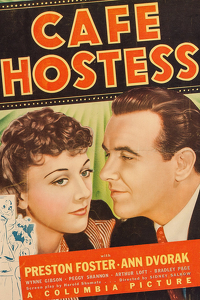
Cafe Hostess is a 1940 American crime film directed by Sidney Salkow and starring Preston Foster and Ann Dvorak. The screenplay was written by Harold Shumate, based on a story by Tay Garnett and Howard Higgin. Prior to filming the studio had been warned by the MPAA that the film did not comply with its code, but it is unclear whether changes were made to the script.

Behind the Mike is a 1937 American comedy film directed by Sidney Salkow, which stars William Gargan, Judith Barrett, Don Wilson, and Sterling Holloway. The screenplay was written by Barry Trivers from a story by Thomas Ahearn and Walton Butterfield. The film was released on September 26, 1937.
















